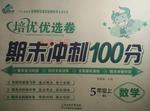题目内容
It’s impossible to determine how many people would have lost their lives without the contribution of African-American inventor Dr Charles Drew.
Charles Drew was born on June 3, 1904, in Washington, DC. His early interest was in education, but he was also an outstanding athlete. While in college, he was awarded as the man who contributed the most to sports during his four years in school. Drew’s sister Elsie suffered from tuberculosis(肺结核) and died in 1920. Her death influenced his decision to study medicine.
After becoming a doctor and working as a college instructor, Drew went to Columbia University, where he earned his Doctor of Medical Science degree. During this time he became involved in research on blood and blood transfusions.
At Columbia, he wrote a paper on “banked blood”, in which he described a technique he developed for the long-term preservation of blood plasma. Before his discovery, blood could not be stored for more than two days because of the rapid breakdown of red blood cells. Drew had discovered that by separating the plasma from the whole blood and then refrigerating them separately, they could be combined a week later for a blood transfusion. Drew became the first African American to receive a PhD in medical science.
After World War II broke out, Drew was called upon to put his techniques into practice. He was named a project director for the American Red Cross but soon quit his post after the government issued an order that blood taken from white donors should be separated from that of black donors.
On April 1, 1950, after he attended the annual free clinic at the John A. Andrew Memorial Hospital, he and other three physicians decided to drive back home. As he was tired from spending the night before in the operating room, he lost control of his car. Drew was badly injured and was taken to Alamance General Hospital in Burlington, North Carolina. He was pronounced dead half an hour after he first received medical attention. Drew's funeral was held on April 5, 1950, at the Nineteenth Street Baptist Church in Washington, DC.
But contrary to popular thought, he was not refused a blood transfusion by an all-white hospital. He indeed received a transfusion but was beyond the help of the doctors attending to him. As Dr. John Ford, one of the doctors who survived the accident, later explained, “We all received the very best of care. The fact that he was a Black did not in any way limit the care that was given to him.” Over the years, Drew has been considered one of the most honored figures in the medical field.
1.According to the passage, ________ might have contributed to the invention of blood banks.
A.the combination of blood cells
B.the rapid breakdown of red blood cells
C.the development of refrigerating technique
D.the technique of separating plasma from the whole blood
2.By saying “contrary to the popular thought” in the last paragraph, the writer _______.
A.can’t understand the doctors’ decision
B.indicates his concern about the popular thought
C.feels disappointed with the all-white hospital
D.means what the doctors did was out of expectation
3.We can learn from the passage that Dr Charles Drew is best remembered by people as _______. .
A.an outstanding athlete B.a college instructor
C.a medical researcher D.a project director
4.What conclusion can we draw from the passage?
A. Charles Drew died in a medical accident.
B. African Americans were still treated unfairly in the 1940s.
C. Charles Drew was the first African American to receive a PhD.
D. Physicians refused to give Charles Drew medical attention because he was a black.
5.In which section of a magazine can we most probably find the passage?
A.People B.Health C.Culture D.Entertainment
1.D
2.D
3.C
4.B
5.A
【解析】
试题分析:本文是一篇记叙文,记叙了非洲的美国发明家查尔斯博士对医学的贡献
1.细节题,由第三段第三行Drew had discovered that by separating the plasma from the whole blood and then refrigerating them separately,可以知道答案,故选D。
2.推理题,由后面的句子he was not refused a blood transfusion by an all-white hospital. He indeed received a transfusion but was beyond the help of the doctors attending to him.可以推出答案,所以选D。
3.细节题,由最后第一段最后一句Drew has been considered one of the most honored figures in the medical field可以知道答案,所以选C
4.推理题,由第四段After World War II broke out, Drew was called upon to put his techniques into practice. He was named a project director for the American Red Cross but soon quit his post after the government issued an order that blood taken from white donors should be separated from that of black donors.可以推出答案,所以选B
5.推理题,由本文的主要意思“非洲的美国发明家查尔斯博士对医学的贡献”,可以推出答案,所以选A
考点:本篇是一篇说明文
点评:做此类短文首先读懂文章,然后再根据问题,在文章中去找到相应的依据,研究相关信息句给出准确的答案。主要考查推理题,要求考生有很强的推理能力,从已给的信息推出所选的内容,从而选出正确答案。考生首先要仔细阅读短文,完整了解信息,准确把握作者观点。

 通城学典默写能手系列答案
通城学典默写能手系列答案 金牌教辅培优优选卷期末冲刺100分系列答案
金牌教辅培优优选卷期末冲刺100分系列答案